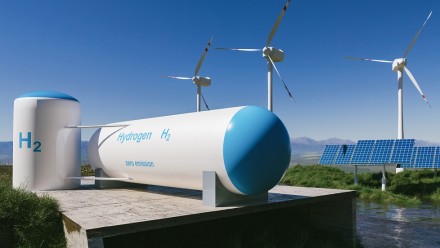Evaluating clean hydrogen production options
Hydrogen can be an important part of a global clean energy system, and Australia has the chance to become a major producer of hydrogen, for export and for use in domestic energy intensive industries.
Technologies for producing hydrogen can either be zero emissions, or they can produce emissions even after carbon capture and storage. Research from The Australian National University (ANU) has provided new insights into the relative costs and remaining emissions of different hydrogen production technologies. The research, published in the leading journal Applied Energy, has found extensive interest both in expert circles and in the public debate, and has been described in the national and international media.
"Australia's clean hydrogen strategy doesn't make a distinction between green and blue hydrogen," said Dr Thomas Longden, from the ANU Crawford School of Public Policy, who co-authored new research in 2021.
Green hydrogen refers to hydrogen made by renewable energy-driven electrolysis, while blue hydrogen is made from natural gas with carbon capture and storage (CCS) technologies.
"The risk is that we could create a hydrogen industry that locks in substantial emissions," Dr Longden said.
"Mature CCS technologies could avoid between 50 and 90 per cent of the emissions, but they are expensive, and become more expensive as the capture rate increases."
“The opportunity on the other hand is to build a hydrogen industry on the basis of electrolysis that is zero emissions and thus future proofed, using Australia’s advantage in renewable energy supply and the hydrogen technologies of the future," study co-author Dr Fiona Beck, from the ANU School of Engineering, said.
More than 100 countries have signed up to the Global Methane Pledge to cut methane emissions by 30 per cent on 2020 levels by 2030, a plan outlined at the United Nations climate summit, COP26. Australia is not one of them.
"Fugitive emissions are the second largest source of methane pollution and rates are rising due to the expansion of unconventional natural gas production that uses fracking,” said Dr Beck. "The alternative is truly clean, the costs of the existing technologies are rapidly falling and new technologies are on the horizon – including through our own research here at ANU," she said.










